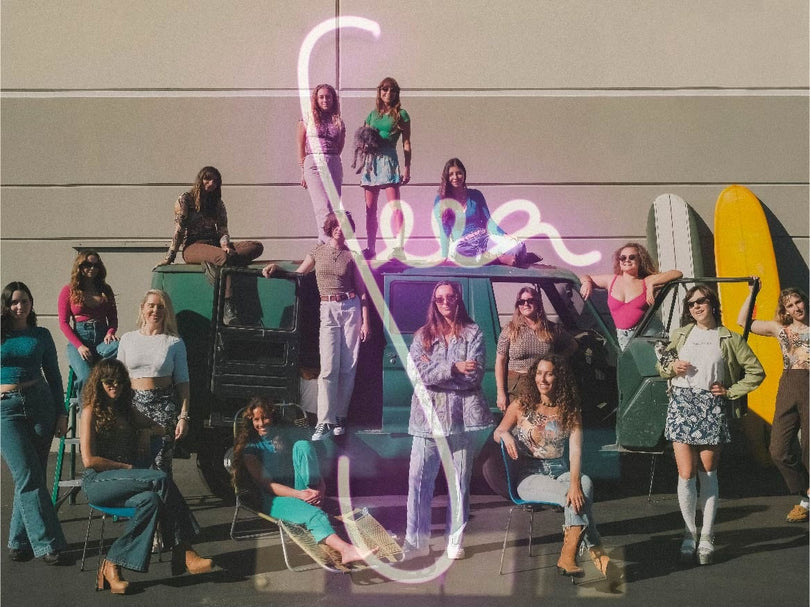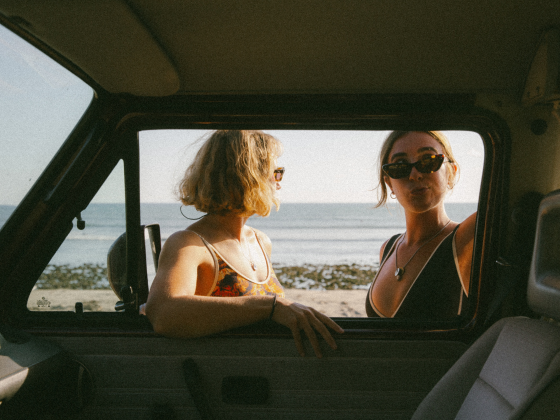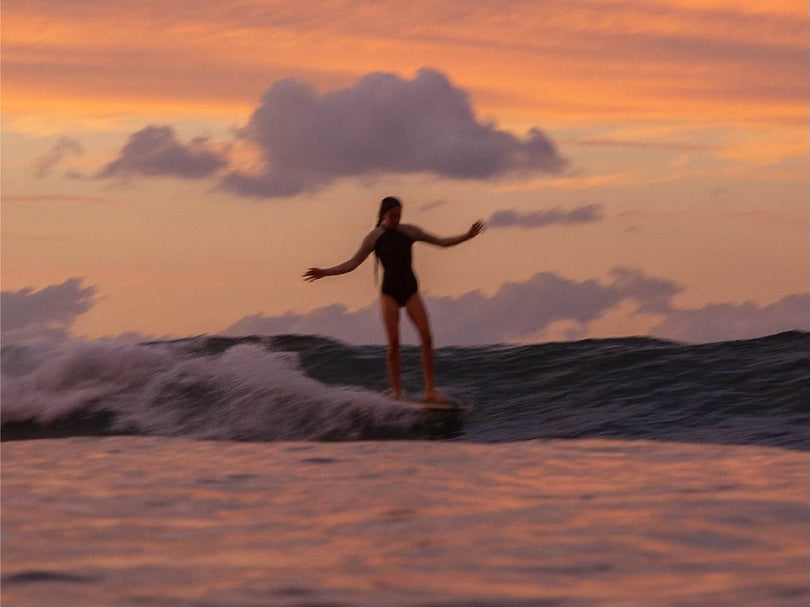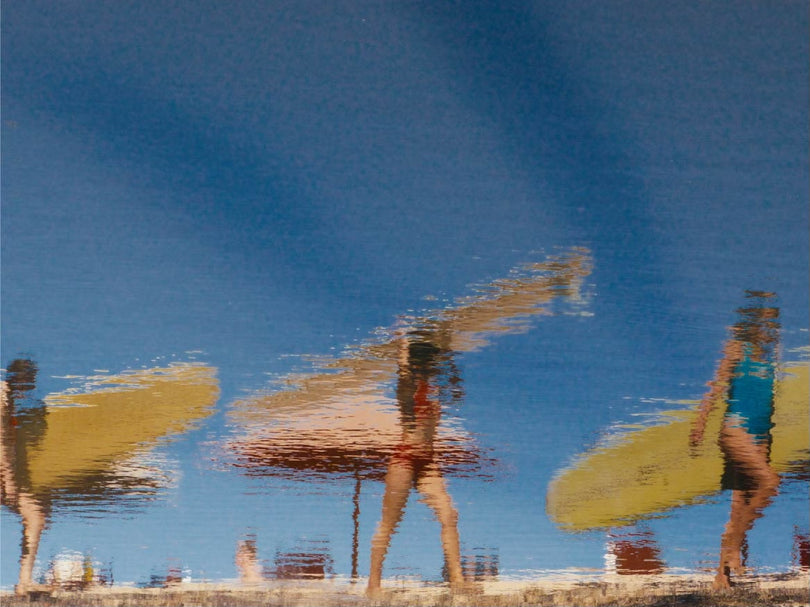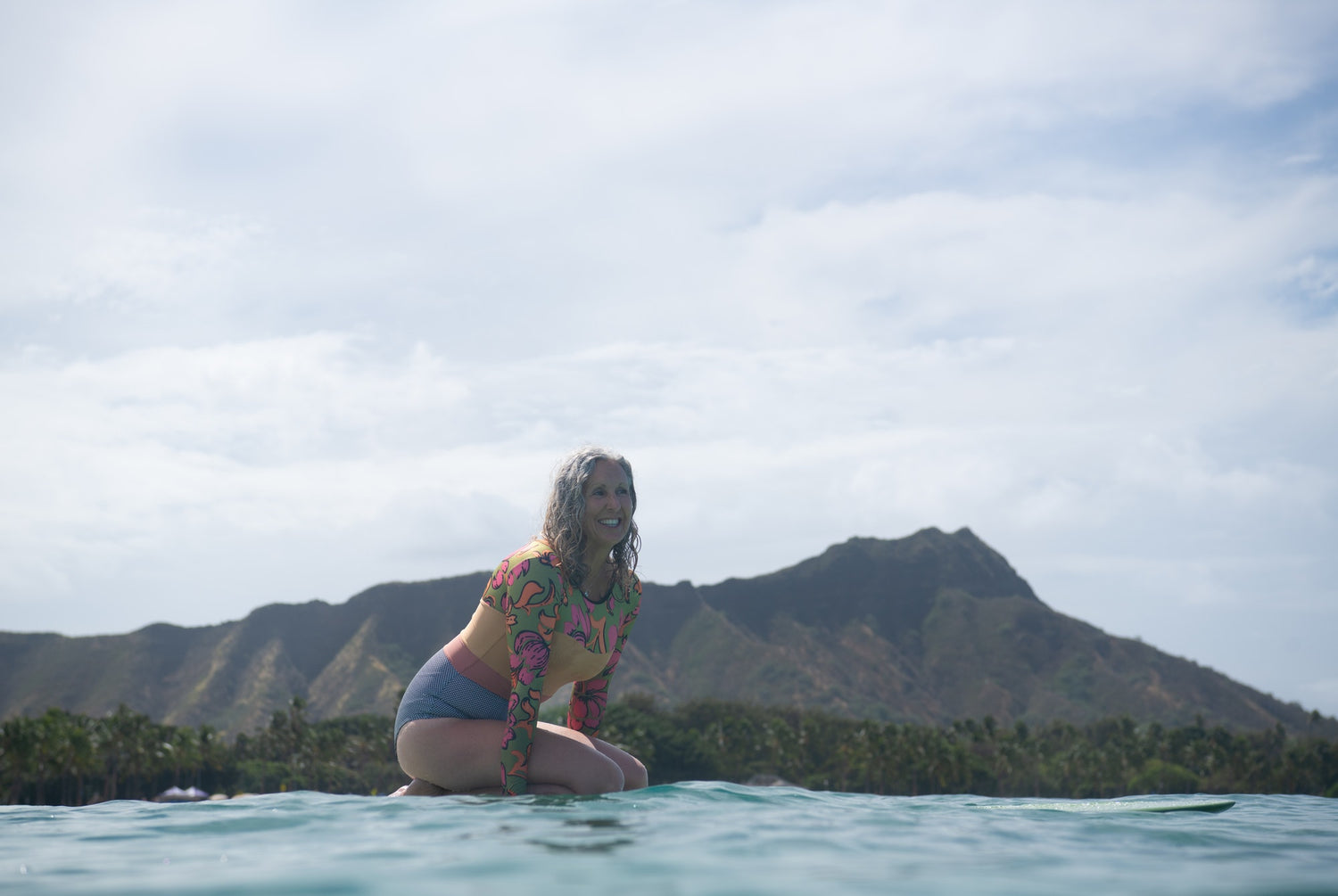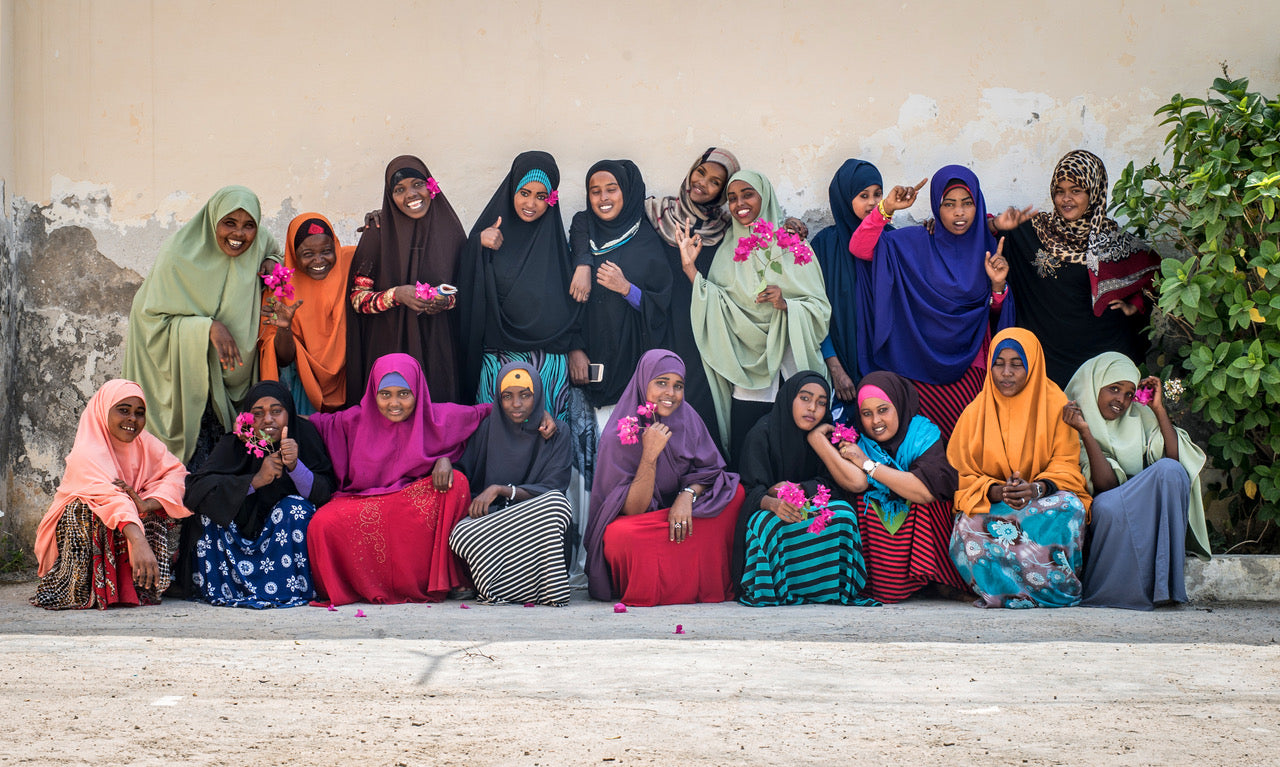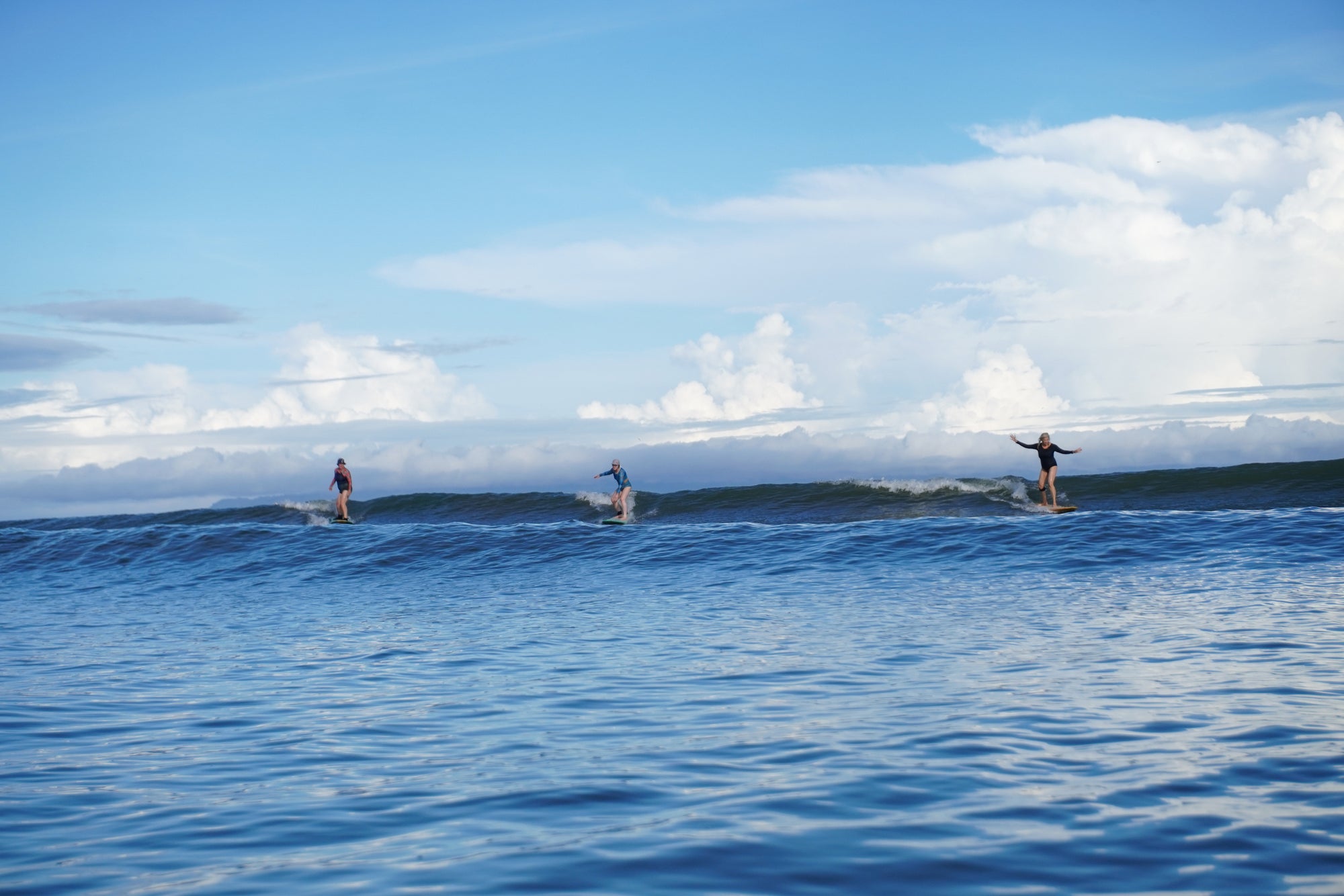As surfers, sun protection is something we think about all the time.
This is particularly important in the summer months when the sun is the strongest throughout the day, or when traveling to tropical destinations where it's easy to spend hours in the water.
If you're younger, you might not think of how important sun protection is and you might not think about the critical role clothing can play in protecting your skin against the sun's harmful rays. Sunscreen and sun-protective clothing should both be used as part of your sun-protection regimen.
But how effective can our clothing be at protecting your skin from the sun?
Ultraviolet Protection Factor (UPF) is the rating system for fabrics and measures the effectiveness in which fabrics protect against UVA and UVB light.
A number of factors determines how effective a particular fabric is a blocking harmful UV rays, including weight, opacity, weave, fiber type, and treatment. For example, a. dark, heavy denim will offer good UPF because the construction of the fabric and the dark color makes it harder for UV light to pass through; conversely, a white, airy, gauze cotton dress will offer far less UPF protection.
Studies show that UPF rated clothing provides better protection against harmful rays than sunscreen alone. In a 2021 study comparing the effectiveness of sunscreen vs UV-protective clothing it was found that the best sunscreen UVA blocker in the study, SPF 50, did not block UVA as well as the lowest performing fabric (nylon, at 96%). In other words, the best sunscreen is not as good as the worst fabric. So, if you've been surfing with only sunscreen as your protection, it's time to consider covering up with our rashguards or surfsuits, all of which offer UPF protection ranging from 30+ to 50+
Some of our swimsuits usually involve at least two to three different fabrics, often from different manufacturers, so it’s tough for us to issue a specific rating for every single suit across the board. Please remember that protection rating can be decreased when the fabric is wet and that the UPF protection rating may be decreased on light colored fabric. Read more about our fabrics and UPF ratings here.
Choosing the best rashguard or surfsuit for your sun protection needs.
If you are looking for maximum sun protection you should choose darker colors. Even if two suits carry the same rating, darker colors in general offer better protection than light colored suits especially when wet. For example, if there's a light colored suit and darker colored suit both rated UPF 50+ the darker colored suit will be better at protecting during water-based activities,fabric stretching, and normal wear and tear on the fabric.
Our rashguards are an excellent option for chest, back, and arm coverage that you can wear alone or layered over a bikini top. Best-seller Palomar, worn below by Chelsea , is slightly cropped, and looks super cute paired with a bikini bottom.

For surfsuits the Mimi, pictured below, the Hermosa, and Dara suits have got you covered.

For leg coverage, we love our Nazare surfsuit, a favorite of team rider Mele Saili, who likes to sun her back, while providing sun coverage for her legs.

For ultimate sun protection, the Leah bodysuit is the best option as it offers full-body coverage like a wetsuit, but is light enough to wear in the summer or even in tropical climates.

In addition to covering up with sun protective suits and a hat (look out for a new surf hat launching next spring!) for all your water-related activities, it's important to cover your face and other exposed areas with sunscreen and reapply regularly.
It can be overwhelming to choose among all the sunscreen brands on the market, or to know which ones are made with natural ingredients that are safe for our oceans.
We've put together a list of four of our favorite planet friendly sunscreen brands to protect your skin from the sand to the surf.

For beach days and light activity in the water: Project Reef
 Born and based on the Island of Maui, Project Reef offers mineral based non-nano zinc sunscreens in SPF 30 and SPF 50 formulations that contain skin-soothing ingredients, like sea buckthorn oil and green tea, that leave skin feeling calm and moisturized. Gliding on smooth without leaving a white cast or residue, Project Reef sunscreens are vegan, reef safe, and never tested on animals.
Born and based on the Island of Maui, Project Reef offers mineral based non-nano zinc sunscreens in SPF 30 and SPF 50 formulations that contain skin-soothing ingredients, like sea buckthorn oil and green tea, that leave skin feeling calm and moisturized. Gliding on smooth without leaving a white cast or residue, Project Reef sunscreens are vegan, reef safe, and never tested on animals.
Committed to protecting and restoring our oceans and coastlines each purchase from Project Reef removes 1lb of plastic from the world’s oceans – the equivalent of 22 water bottles – through partner organizations such as ReSea Project and PlasticBank.
The best protection while you surf : Manda and Avasol
Both offer ultra clean protection grounded in indigenous wisdom.
Manda
 Made from all natural, food-safe ingredients, Manda is one of our go-to picks for surfing or being active outdoors because it stays on the skin. Manda is one of few sunscreen companies on the market to incorporate amazing Thanaka, also known as "nature's sunscreen", into their products. Hailed for its anti-inflammatory, anti-aging and moisturizing properties, Thanaka, made from the bark of a tree indigenous to Myanmar, has long been used by the Burmese people as a skin protectant and beautifier. We love Thanaka not only for it's sun protecting qualities, but also because it's regenerative. Zinc is a powerful sun-protectant and certainly far more eco friendly than chemical sunscreens that are unhealthy for people and our oceans, but it is, after all, a finite resource that must be extracted from the Earth. By incorporating Thanaka into their formulation, Manda is able to use less Zinc.
Made from all natural, food-safe ingredients, Manda is one of our go-to picks for surfing or being active outdoors because it stays on the skin. Manda is one of few sunscreen companies on the market to incorporate amazing Thanaka, also known as "nature's sunscreen", into their products. Hailed for its anti-inflammatory, anti-aging and moisturizing properties, Thanaka, made from the bark of a tree indigenous to Myanmar, has long been used by the Burmese people as a skin protectant and beautifier. We love Thanaka not only for it's sun protecting qualities, but also because it's regenerative. Zinc is a powerful sun-protectant and certainly far more eco friendly than chemical sunscreens that are unhealthy for people and our oceans, but it is, after all, a finite resource that must be extracted from the Earth. By incorporating Thanaka into their formulation, Manda is able to use less Zinc.
Seea founder, Amanda Chinchelli , is a huge fan of their soothing organic Paw Paw Salve, which is a multipurpose salve one can use daily to soothe, protect, moisturize and repair the skin.
Avasol
 If you're looking for natural, heavy-duty protection while you surf, in a range of shades to match your skin tone, Avasol's Surfer's Barrier Stick is our pick. For something not quite as thick, try their cream.
If you're looking for natural, heavy-duty protection while you surf, in a range of shades to match your skin tone, Avasol's Surfer's Barrier Stick is our pick. For something not quite as thick, try their cream.
Team rider Leah Dawson's choice, Avasol has been conscientiously formulated to contain only the safest ingredients for people and the planet. We love this brand because it performs well and uses ultra high-quality ingredients, but also because they are very transparent about the ingredients they use and their practices overall. Learn more about Avasol in this 2016 interview with their founder Chris Wilksinon, and ambassador Leah Dawson
For comfortable, day-to-day wear: Cotz

Sunscreen should be part of your daily regimen year-round, no matter where you live. If you're going to be exposed to sunlight, even through the window of a car, you should be wearing sunscreen. Heavy sunscreens we wear at the beach or while surfing aren't necessarily comfortable or appropriate for everyday use, so we love formulations that don't feel thick or heavy on the skin and don't leave any residue. Cotz, which stands for "Contains only titanium and zinc" is a brand that offers several formulations including ones for sensitive skin, babies, and one that can be worn as a primer beneath your makeup. We love the Flawless Finish formulation for the face, which is an SPF 50 in a sheet tinted lightweight cream that blends nicely into a range of skin tones.
Now get out there and enjoy the sun - safely!

